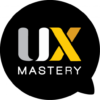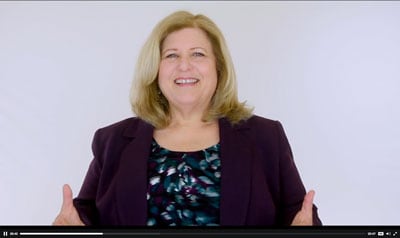Keen to get your head around conceptual models? See what UX Designer Laci White thought of Susan Weinschenk’s online course UX Conceptual Model Design.
This is part of our series of reviews of online UX courses. Read some of our other reviews or see our full list of online UX courses.
Course Information
- Course Name: UX Conceptual Model Design
- Author: Susan Weinschenk
- Hosted by: The Team W
- Length: 11 lectures, 7 quizzes, 4 exercises (~1.5 hours of video)
- Intended Audience: Beginner and intermediate designers or anyone interested in learning about conceptual models.
- What You’ll Learn: The basics of mental models, conceptual models, information architecture, object maps and task flows. You’ll walk away with the basic tools to create your own object map and task flows based on your user’s conceptual model.
- Assumed Knowledge: A basic knowledge of user research, task analysis, and personas.
- Price at time of review: US $125
Review
This course is a solid choice if you have little time and want to gain a foundation in mental models and how to use those to inform your design through using concept maps and task flows. You’ll also learn the basics of information architecture, particularly navigation and using card sorting, to aid you with your navigation decisions. The first few lectures focus heavily on these topics, so if you’re familiar with these topics already, you might find the first section a little slow. The exercises at the end of each module are good for beginners and intermediates alike.
The real meat of this course comes in about halfway through, when you dive into user objects, object maps, and task flows. Here, the course becomes highly tactical, giving learners clear walkthroughs on how to extract objects from task analysis, what to do with those objects, then how to use them to construct a user flow that will mesh with your user’s mental model.
Susan uses the concept of a real estate app as an example of how to do this. She reviews a task analysis, created from user research, to pull out the nouns. These nouns are your candidates for the major user objects you want to clearly convey in your application. In the real estate app example, the user objects become ‘Properties’, ‘Favorites’, and ‘Criteria’.
Now that you have your user objects, you can put them into an Object Map. The Object Map helps you make decisions on the attributes, actions, and views available within that object and helps you make sure they are in alignment with your task analysis.
Susan then uses the object map to inform the user task flow. Most task flows I have seen only display the object and/or action, eg Properties, View Favorites, Select Criteria, so I found it especially interesting that she not only displayed the object, but the view state and included the user actions and changes in view state through the connectors.
There are a few things that would have improved the experience for me. Firstly, I had trouble planning and managing my time because there was no indication at the beginning of how long the course would take. That would have been really useful. I would also have preferred a bit more control over the videos – being able to change the speed would have solved that. There is no clear indication of when to expect feedback on exercise submissions, which would be useful. Lastly, I found the Next Steps section a bit heavy on the self-promotion.
The Presenter
Susan Weinschenk is the person to call when you need to know how to persuade and motivate people to take action. She has a Ph.D. in Psychology and over 30 years of experience as a behavioral scientist. Her clients call her “The Brain Lady” because she applies research on brain science to predict, understand, and explain what motivates people and how they behave. Dr. Weinschenk is the author of several books, including 100 Things Every Designer Needs To Know About People, 100 MORE Things Every Designer Needs To Know About People, How To Get People To Do Stuff, 100 Things Every Presenter Needs To Know About People, and Neuro Web Design: What makes them click?
Pros
- Provides several examples and use cases throughout the course.
- Exercises provided at the end of each module that you can submit to the presenter for feedback.
- Walks you through in detail how to complete an object map and user task flow.
- Well produced videos with good sound quality.
- The presenter speaks clearly and with consideration.
Cons
- No clear indication when to expect feedback on exercise submissions.
- If the pace of the presenter is too slow for you there is no way to speed up the video.
- You are not told upfront how long the course will take, making it difficult to plan.
Summary
Overall, this is a good course for beginners and intermediate designers, especially if you are designing a product from scratch.
- Content (how useful, up to date, practical, and comprehensive): 7/10
- Delivery (presentation style, pace, clarity, authority): 7/10
- Production (video quality, audio quality, editing): 9/10
- User Interface (reliable infrastructure, usable interface, convenient): 7/10
- Overall rating: 7/10

